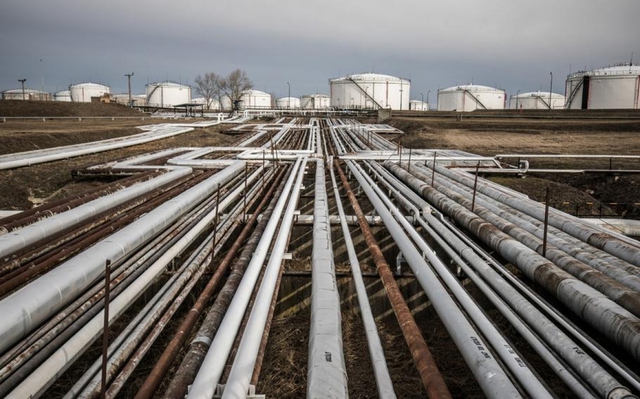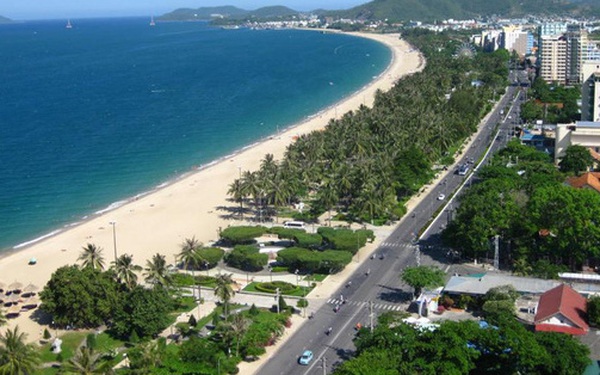Oil war between Russia and the EU: Who will be the “chicken”?
Before the war in Ukraine, Russia sold about half of its 7.85 million bpd of crude and refined oil to Europe. But when the war broke out and the EU announced it would end its dependence on Russian oil and gas, the Kremlin was benefiting from soaring world oil prices while still actively seeking new customers and transferring money. exports to Asia.

Pipelines and oil storage tanks at the Duna refinery in Szazhalombatta, Hungary. Photo: Bloomberg
=It’s not easy to punish an oil superpower
This “lucky fortune” shows how difficult it is to punish an oil and gas superpower like Russia when much of the world, especially developing countries, is dependent on fossil fuels. jelly.
Even with “relatively strong production cuts” forecast this year, Russia’s rental revenue “will increase significantly to more than $180 billion due to rising oil prices,” according to Rystad Energy, a research firm. Independently advises investors. This number is 45% higher than in 2021.
A map of the movements of oil tankers shows that Russia’s crude oil exports have fallen by nearly 20%, a relatively modest number compared to sanctions efforts.
According to a study conducted by Spire Global for the Washington Post, ships waiting for crude oil to leave Russian ports dropped from an average of 17 ships a day to 13 ships a day after the US sanctions were announced on 8. /3.
Potential customers outside the EU
However, Russia still has many other customers outside of Europe. Russia has sold oil to India and China, large economies with rapid growth and has also bypassed international sanctions related to the war between Russia and Ukraine.
Previously, Russian oil accounted for less than 3% of India’s consumption, but New Delhi’s import volume has increased significantly in the past few months. China has long been Russia’s biggest Asian customer, and Beijing needs oil to power its automotive and petrochemical industries.
India is one of the few places willing to buy Russian oil and they bought it at a discount of more than 30 USD/barrel.
In April, the volume of oil purchased by India skyrocketed. India bought 627,000 bpd of Russia’s benchmark Urals crude, compared with 274,000 bpd in March. The daily volume of Indian oil imports from Russia in April was 20 times higher than the daily average 2021, according to S&P Global, an international data news company. India’s total oil consumption in 2021 is 4.76 million bpd.
“The relationship between Russia and India is much denser than oil,” RBC Capital Markets said in a research note to clients in May. The investment firm noted that Russia is “one of the biggest players in the world.” largest arms supplier to India”. At the end of 2021, the two countries renewed a 10-year defense cooperation treaty.
However, transport logistics face many challenges and Russia may face a shortage of tankers.
“It can take two weeks for an oil tanker to go from Murmansk (Russia) to Europe, but it takes a month to get to India,” said Daniel Yergin, vice president of S&P Global and energy historian. . In addition, Russian oil also has to deal with competition from Iraq, a potential oil exporter in Asia.
Russia sees China as a potential market for oil sales. However, the new wave of Covid-19 that prompted China to impose a blockade in the city of Shanghai and the capital Beijing has sharply reduced economic activities and limited demand for oil imports. Analysts say China’s oil consumption has fallen by 1-1.5 million bpd.
Instead of letting oil spill onto the world market, though, China is building storage tanks to store oil for future emergencies.
In addition to China and India, Russian oil is also heading to Turkey, Georgia and some African countries.
Even taking into account the drop in crude prices, Russia still sells crude at about $70 a barrel – well above the official price for nearly eight years, according to the US Energy Information Administration.
When will the EU get rid of Russian oil completely?
The nature of the oil market and the slow change in consumption habits mean that relatively small shortages can also drive prices up. So, although European Commission President Ursula von der Leyen promises to “orderly get rid of Russian oil” and in a way that “reduces the impact on global markets,” oil analysts say. Miners argue that big change will be nothing but orderliness.
Ms. Von der Leyen said that the EU would completely ban imports of all Russian oil, crude or refined oil, transported by sea or pipeline. She also outlined two schedules to give up Russian oil in six months and refined products by the end of the year.
Mr. Kevin Book, CEO of ClearView Energy Partners, said that Ms. Leyen is “making two big bets”. First, a slow phase out of Russian oil could protect Europe from a spike in oil prices. The second is to offer a flexible program for those countries that are still reluctant to create the absolute consensus needed to approve the EU plan.
“Neither missions seem certain to succeed. If EU sanctions come into effect and are implemented, then the oil market will tighten and oil prices will increase,” said Kevin Book.
Diesel prices in Europe have skyrocketed, hurting car users, freighters and truck drivers. Kayrros, a satellite data analytics firm, said crude oil inventories in storage facilities in Europe remained “much lower” than average for this time of year.
The EU’s phasing out of Russian oil is likely to lead to global market turmoil, which is already underway and will worsen as European refiners stock up on fuel, a report by Eurasia Group said. and push up import prices in preparation for the Russian fuel embargo. In doing so, the global market for these products will become even tighter.”
Game “Who’s Chicken”
Europe has made surprising progress in ending its dependence on Russian oil. From May 2021 to February 2022, an average of five Russian crude oil tankers docked at German ports per month, according to Spire Global, a satellite company that monitors ship operations. In March, that number dropped to 2 ships and in April it was 0.
The existing pipeline system can still be used to supply oil from other sources, but Germany has replaced all oil imports from Russia except for 12% that is transported by pipeline to the refinery. PCK Schwedt, about 96km northeast of Berlin.
The Schwedt refinery is owned by the Russian government-controlled oil giant Rosneft and the company does not want to switch to another supplier. The German government is changing the law to allow Berlin to seize the facility. Germany could then replace Russian crude with other imports supplied through the Gdansk or Rostock pipeline.
It is not yet clear how Russia will respond. “At this point, we’re in a ‘who’s chicken’ game in terms of energy,” said Helima Croft, global head of commodity strategy at RBC Capital Markets and a former CIA analyst. quantity”.
“Who is the chicken” is a game where 2 players confront each other on a narrow road in the style of “black goat-white goat”. If no one gets out of the way, both will crash into each other and lose together, but if one retreats first, they lose first and are called “chickens”.
“What if Russia said: ‘You won’t have 12 months’ [để loại bỏ dần dầu Nga]’? This is probably the price the West has to pay to uphold the principle that no one can invade a sovereign state,” Croft said.
According to the Washington Post
at Blogtuan.info – Source: cafebiz.vn – Read the original article here



